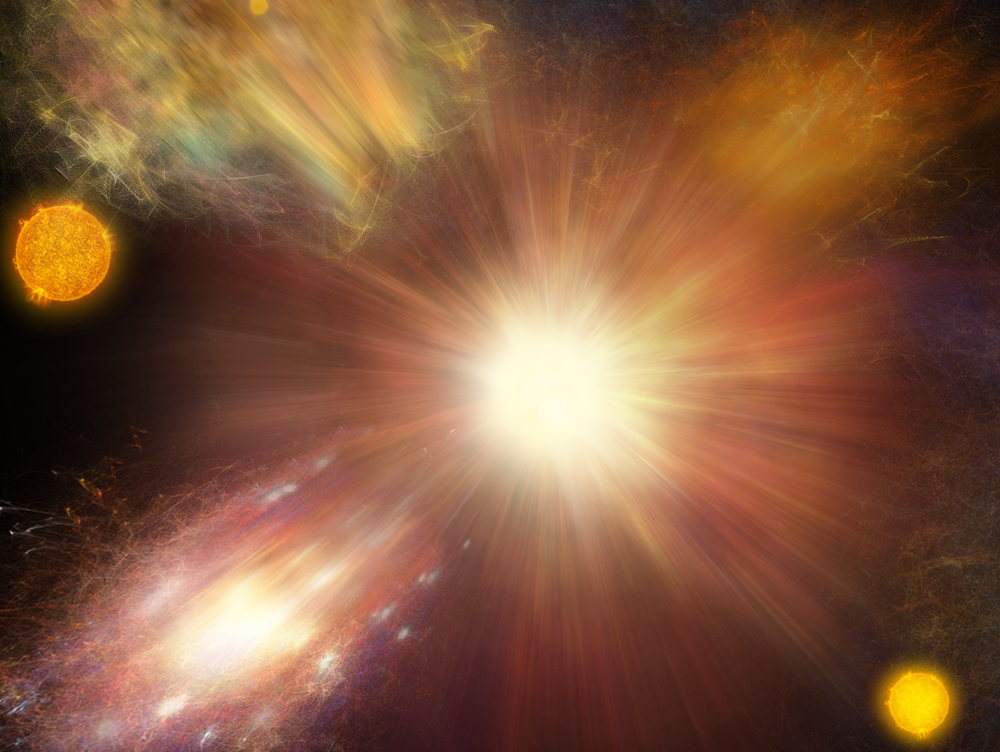Bridging the Gap: Observations and Theory of Star Formation Meet on Large and Small Scales
Workshop Image Gallery
The KISS images below are public domain, but must be accompanied by the appropriate image credit.
Figure 1: Understanding the physical processes that govern the formation and evolution of galaxies is one of the key objectives of modern astrophysics. Galaxies form out of gas concentrations that produce primitive stellar clusters. Further accretion of gas from the inter-galactic medium fuel further star formation while a important contribution to the growth of stellar mass comes from galaxy mergers.
Image credit: Keck Institute for Space Studies / Chuck Carter.
Figure 2: Star Formation is the main driver of galaxy evolution because how it is regulated determines the stellar growth and chemical enrichment of galaxies over cosmic time. Stars form out of the gravitational collapse of molecular gas which is later slowed down by the radiative and mechanical feedback from newly formed stars.
Image credit: Keck Institute for Space Studies / Chuck Carter.
Figure 3: Stellar Feedback, in the form of radiation, stellar winds, and supernova explosions, plays an important role in regulating star formation in galaxies by slowing down gravitational collapse and even destroying molecular clouds, which are the sites where star formation takes place.
Image credit: Keck Institute for Space Studies / Chuck Carter.




